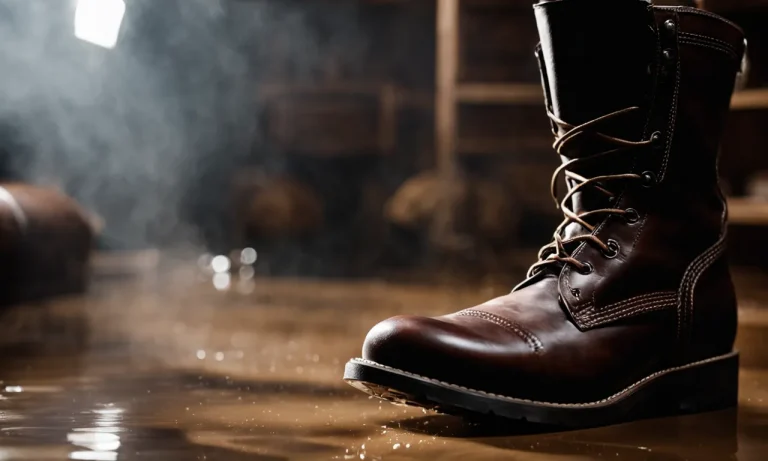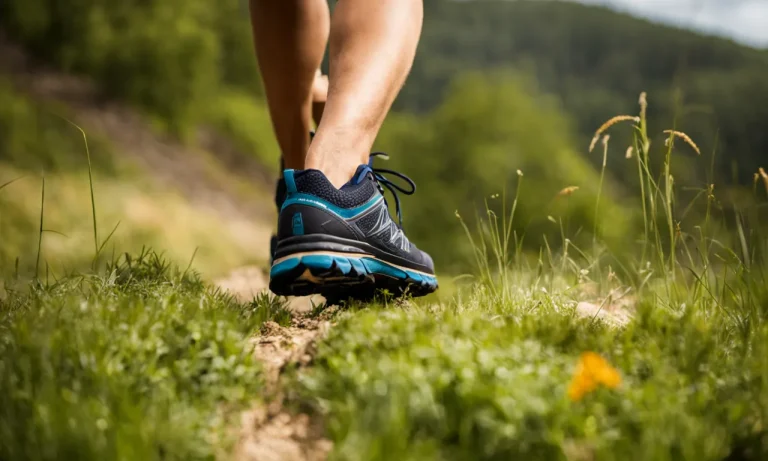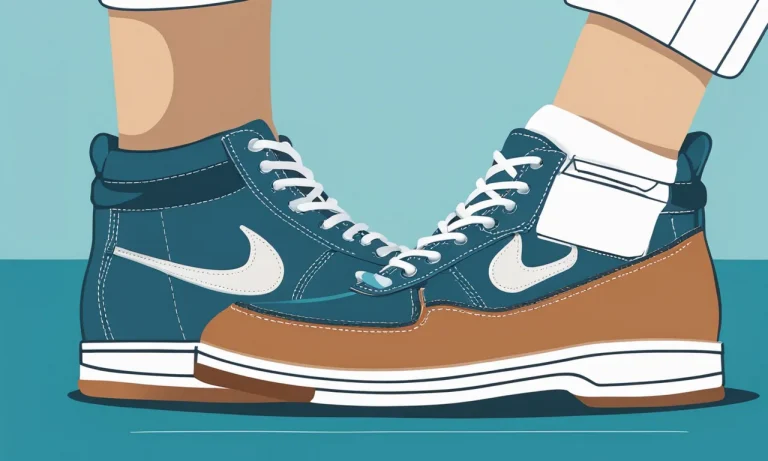If you’ve ever wondered whether you can safely clean your favorite pair of boots in the washing machine, you’re not alone. Many boot wearers find themselves facing this dilemma when it’s time to freshen up their footwear.
Here’s a quick answer to your question: You can put certain types of boots in the washer, but you need to be careful about the materials, construction and cleaning method you use to avoid damaging your boots.
In this comprehensive guide, we’ll walk through everything you need to know about washing boots in your machine. You’ll learn which types of boots can go in the washer versus hand washing only, the best washing techniques to use, how to thoroughly dry your boots after washing, and tips to extend the life of your boots with proper cleaning.
Determine If Your Boots Are Machine Washable
Before tossing your boots into the washing machine, it’s crucial to determine whether they are machine washable. Not all boots are designed to withstand the rigors of a washing machine cycle, and improper cleaning methods can cause irreversible damage.
Here are a few key factors to consider when assessing the washability of your boots:
Check the Boot Materials
The first step is to check the materials used in the construction of your boots. While some materials, such as rubber or certain synthetic fabrics, are generally safe to wash in the machine, others may not fare as well. Leather, suede, and delicate fabrics are often not suitable for machine washing.
To be sure, consult the manufacturer’s instructions or check their website for specific care recommendations.
Inspect the Construction and Lining
Besides the materials, it’s essential to inspect the construction and lining of your boots. Look for any signs of loose stitching, glued seams, or delicate embellishments that may come off during the washing process.
Additionally, check if the boots have a removable lining or insole, as these may require separate hand washing.
Identify the Boot Type
Another factor to consider is the type of boots you have. Work boots, hiking boots, and rain boots are often more durable and designed for outdoor use. These types of boots are more likely to withstand machine washing.
However, fashion boots or boots with intricate designs may not be suitable for the washing machine. Again, refer to the manufacturer’s guidelines for the best course of action.
Remember, even if your boots are machine washable, it’s essential to take proper precautions. Use a gentle cycle with cold water and a mild detergent specifically designed for delicate fabrics. Always remove any excess dirt or mud before washing.
If in doubt, it’s generally safer to hand wash your boots or seek professional cleaning services to preserve their quality and longevity.
Preparing Your Boots for the Washer
Remove Laces and Inserts
Before putting your boots in the washer, it’s important to remove the laces and any removable inserts or insoles. This will prevent them from getting tangled or damaged during the washing process. You can either wash the laces separately by hand or replace them if they are worn out.
As for the inserts, check the manufacturer’s instructions to see if they are machine washable. If not, it’s best to clean them separately.
Brush Off Loose Dirt
Prior to washing your boots, it’s a good idea to brush off any loose dirt or debris. This can be done using a soft brush or an old toothbrush. Gently scrub the surface of the boots to remove any dirt that may have accumulated.
This step will help prevent the dirt from spreading and potentially damaging the inside of your washer. Additionally, removing the dirt will make the washing process more effective in cleaning your boots.
Pre-treat Stains and Odors
If your boots have any stubborn stains or unpleasant odors, it’s important to pre-treat them before washing. There are various methods you can use to tackle stains and odors, depending on the material of your boots.
For example, you can use a stain remover or a mixture of water and mild detergent to treat stains. To eliminate odors, you can sprinkle baking soda inside your boots and let it sit overnight before washing. This will help absorb any unwanted smells.
It’s worth noting that not all boots can be washed in a machine. Some materials, such as suede or leather, require special care and should be cleaned by hand or taken to a professional cleaner. Always check the manufacturer’s instructions or website for specific cleaning recommendations.
Washing Machine Settings and Detergent
When it comes to washing your boots in the washer, it’s important to use the right settings and detergent to ensure they come out clean and undamaged. Here are some tips to help you with that:
Choose the Right Washer Cycle
Not all washer cycles are suitable for washing boots. The best option is to use a delicate or gentle cycle, as this will minimize the risk of any damage to your boots. These cycles typically have slower spin speeds and less agitation, which is ideal for more delicate items like boots.
It’s also a good idea to check the manufacturer’s instructions for your specific washer model. Some washers may have specific settings for shoes or boots, so it’s worth looking into that before starting the wash.
Use a Gentle Detergent
When it comes to choosing a detergent for washing your boots, opt for a gentle or mild one. Avoid using harsh detergents or bleach, as these can damage the material and affect the color of your boots.
Look for detergents that are specifically designed for delicate fabrics or handwashing. These detergents are usually milder and have a pH balance that is gentle on fabrics.
Skip the Fabric Softener
While fabric softener may be great for your clothes, it’s not recommended for washing boots. Fabric softener can leave a residue on the boots, making them slippery or affecting their appearance.
Instead, focus on getting your boots clean and fresh with a gentle detergent. If you want to add a pleasant scent to your boots, you can use a fabric refresher spray after they are dry.
Remember, always follow the manufacturer’s instructions for both your boots and your washer when it comes to cleaning them. This will help ensure that your boots come out looking great and ready to wear again!
Drying Your Boots Thoroughly
After washing your boots, it is crucial to dry them thoroughly to prevent mold and mildew growth, as well as to maintain their shape and integrity. Here are a few methods you can follow to ensure your boots dry effectively:
Air Dry Boots If Possible
If the weather permits, the best way to dry your boots is by air drying them. Find a well-ventilated area with good air circulation and place your boots there. Make sure to remove any insoles or inserts and open up the laces to allow air to reach the interior of the boots.
It is important to avoid direct heat sources like radiators or heaters, as they can warp or damage the materials. Air drying may take a bit longer, but it is gentler on your boots and helps to preserve their quality.
Use a Boot Dryer
If you need to speed up the drying process, a boot dryer can be a great investment. Boot dryers are designed to circulate warm air inside your boots, effectively drying them from the inside out. They are particularly useful for boots with thick insulation or waterproof linings.
Simply insert the boot dryer into your boots, turn it on, and let it do its job. However, it is important to follow the manufacturer’s instructions and avoid leaving the dryer on for too long, as excessive heat can damage certain materials.
Add Crumpled Paper
If you don’t have access to a boot dryer or want to use a more budget-friendly option, you can stuff your boots with crumpled newspaper or paper towels. This method helps to absorb moisture and speeds up the drying process.
Fill the boots with enough paper to maintain their shape and allow air to circulate. Replace the paper every few hours until the boots are completely dry. Remember to remove any insoles or inserts before stuffing the boots with paper.
By following these drying methods, you can ensure that your boots are thoroughly dried and ready for your next adventure. Remember, proper care and maintenance will prolong the life of your boots and keep them looking and performing their best.
Caring for Your Boots After Washing
Once you have successfully washed your boots, it is important to take proper care of them to ensure their longevity and durability. Here are some essential steps to follow:
Apply Protective Sprays or Creams
After washing your boots, it is recommended to apply a protective spray or cream to help maintain their quality. These products act as a barrier against dirt, water, and other elements that can damage your boots.
They help to extend the lifespan of your boots and keep them looking great for longer periods of time. Look for products specifically designed for the material of your boots, such as suede, leather, or fabric.
Stuff Boots With Paper While Storing
When storing your boots, it is important to maintain their shape to prevent them from becoming misshapen or developing creases. One useful trick is to stuff your boots with paper. This helps to retain their original shape and prevents them from collapsing.
You can use newspaper, tissue paper, or even shoe trees to fill the boots. Additionally, make sure to store them in a cool, dry place to prevent the growth of mold or mildew.
Rotate Boots to Extend Wear
Rotating your boots is a great way to extend their wear and prevent excessive wear and tear. Wearing the same pair of boots every day can lead to faster deterioration. By rotating between multiple pairs, you give each pair a chance to rest and recover.
This can significantly increase their lifespan and keep them in good condition for longer. Plus, it allows you to experiment with different styles and keep your shoe game fresh!
Remember, taking care of your boots is essential to maintain their appearance, comfort, and longevity. By following these simple steps, you can ensure that your boots stay in great shape and continue to be a stylish and reliable footwear option for years to come.
Conclusion
With the right approach, many boots can be safely washed in your machine without damage. Focus on preparing boots properly, using a gentle wash cycle and detergent, air drying thoroughly afterward, and providing protective care when not being worn.
Following these tips will keep your favorite boots looking and smelling fresh, so you can confidently wear them for seasons to come. If you have any lingering concerns about washing particularly delicate boots, take them to a professional cleaner for specialized care.
But for most basic boot cleaning needs, your washing machine can get the job done.






